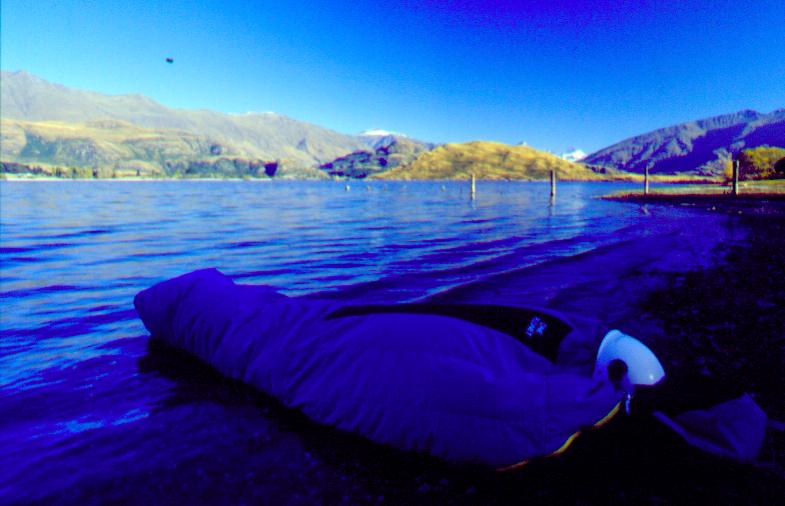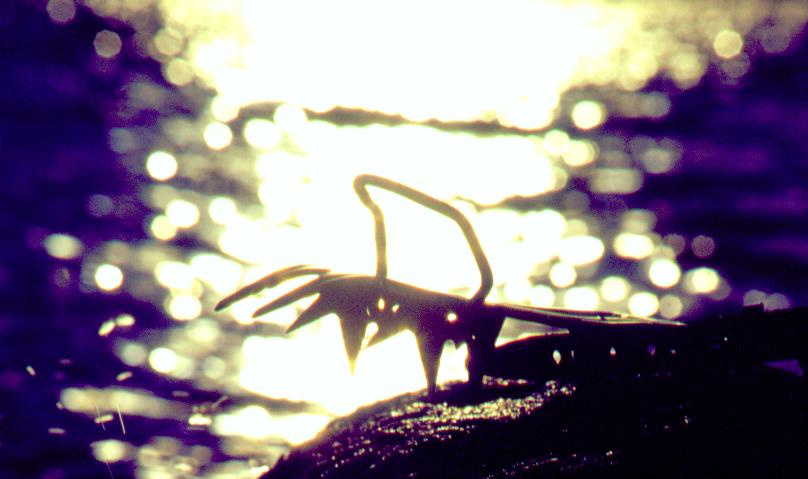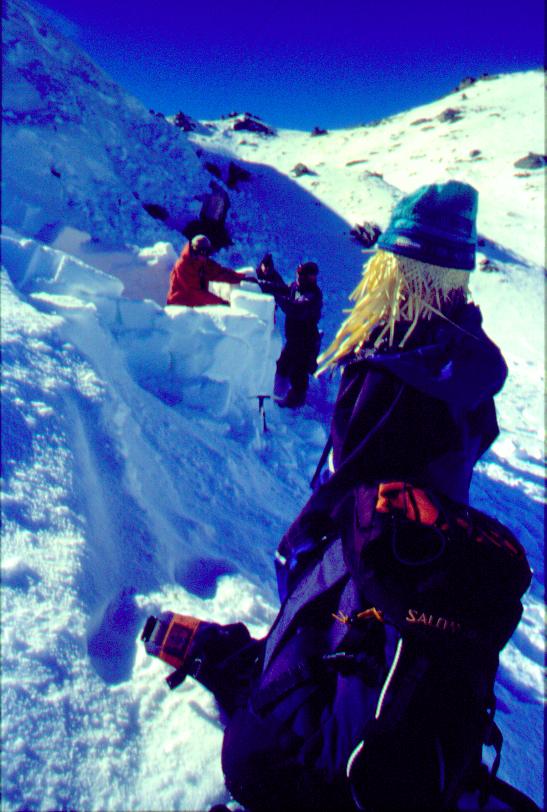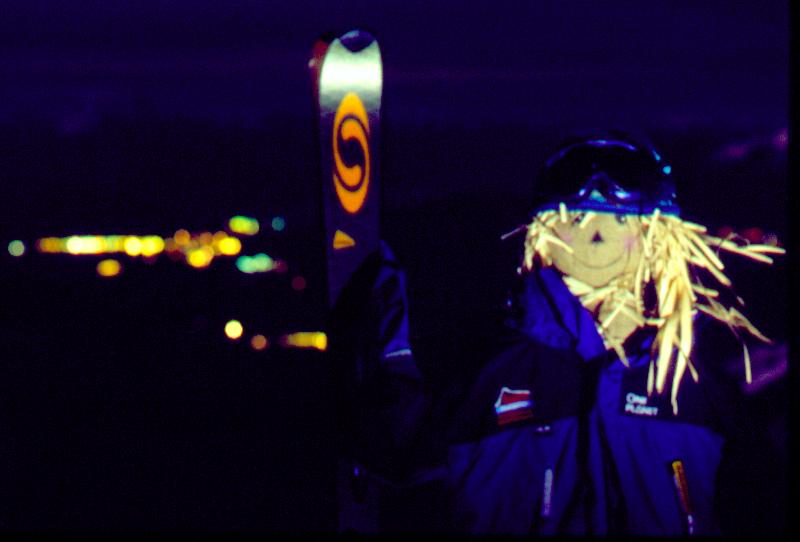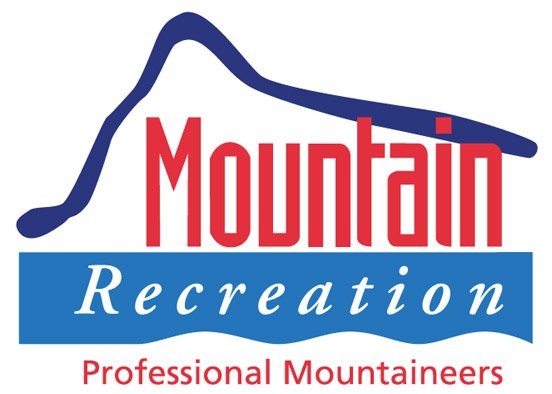 |
| New Zealand |
|
|
Mountain Essays
1: Looking for George Mallory
2: Aspiring Climb Essay
3: Photo Essay - Credric, the aspiring climber
Looking for George Mallory
On Friday, Feb 6 2004, two climbers left French Ridge hut for Mt. Avalanche.
A cold front with accompanying gale force winds was forecast to cross the South Island during the day. Whiteout cloud conditions prevented others sighting the climbers and by nightfall there were concerns for the climbers safety .
On Sat. morning the hut radio crackled, adding to the tension. The two Australian climbers were still missing; the weather was abysmal with the peaks shrouded by cloud and shrieking winds.They were reasonably experienced and one had climbed Mt. Everest.
A hundred years ago on 8 June, 1924 George Leigh Mallory and companion left for a day climb which would thrust them into climbing history; missing, presumed dead. Everest, the iconic household word for supreme altitude, mountain endeavours and stories coining phrases like Hillary's: "We knocked the bastard off" and Mallory's: "Because it's there."
My own fascination with Everest began in 1963 with a book: The Ascent of Everest by John Hunt. The ultimate high adventure of expeditioners with possum fur lined boots and legionnaire style hats
stirred my schoolboy interest sufficiently to forge my own crampons.
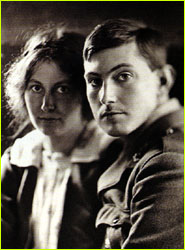 Ruth & George Mallory Ruth & George Mallory
(collection Mrs S. Russell)
The mountain of myths: Had Mallory beaten Hillary? Who was the first? Why have over 160 climbers died in attempt to step on the top of the world? Had Mallory, the talented rockclimber, climbed the 2nd Step? Where were Mallory and Irving?
"Do you have the names of the climbers missing on Mt. Avalanche?" I asked and was handed their D.O.C. intention card.
I knew most of the Australian climbers who had climbed Everest. Jon Muir and
Pat Cullinan had both attended my climbing courses.
"You're joking!" I exclaimed.
There on the intentions card was the name of Everest's most famous climber,
George Mallory and I was being asked to look for him.
In the spring of 1999, I was leading a trek/climbing expedition in Nepal.
On 1 May, I was on Gokyo Ri (5400m) looking at the windswept, north face of
Everest when someone said the BBC had just announced:
"The climber George Mallory has been found." The grisly reality of finding the remains of a peer, exposed and vulnerable to the mountain elements did not sit well with the romantic in me.
In the meantime, the search became complicated. The National Rescue Center had been advised an emergency locator beacon had bee n triggered 2 miles south of Mt.
Aspiring and they had dispatched a helicopter to find it. We waited pensively
wondering what the helicopter with a policeman and paramedic would find?
Had George Mallory triggered the beacon?
Mt. Avalanche is a pre-dominantly rock peak, many would describe as weetbix
and choss, particularly on it's seldom climbed, north ridge. At 2,400m (or 8,000ft) the peak has a superb vista of the Aspiring region. The South West face is a steep snow route topping out on a cornice a nd exposed pitch to the summit.
Triggering a locator beacon at 8,000 metres would be of little use to Mallory in
1924 or 2004 for that matter. Above 8,000 meters is now called the death zone.
In Wanaka, Deep Canyon Director, Dave Vass and I switched places with the policeman and hapless paramedic. They'd found the climbers had been found
clinging to a cliff edge on the north side of the peak. Unable to assist they flew
away. Twenty-knot winds streamed clouds past rock walls and razor ridgelines
as our h elicopter swooped in search of the climbers. "There!" They were 150mtrs. below the summit on the north face. Below them the Kitchener cirque, a cauldron of ice and rock plunged 2,000 meters into the East Matukituki valley.
"What a spectacular place to be stuck!" I thought. Dave and I considered our
options. The wind and cloud made helicopter stropping them off the face
impossible. "Can you drop us on the summit?" I asked Brendon. Dave looked out with skepticism at the rocky top, no bigger than the helic o pter. Brendon didn't want to hook his skid, so we jumped! It took a rapid mental adjustment to solo down shattered, exposed rock, past abseil slings to 20 meters above the climbers.
The first balaclava clad climber greeted me with "I'm George" and a soft,
"Thankyou for coming."
The search was over; I'd found my Mallory and companion. They were cold and lacking in confidence after the night on the face. We spoke nothing of Everest, nor the Mallory name. The sharp wind and scudding cloud made for an urgent rescue.
I imagined a night above 8,000 meters on the north face with little food, no stove or shelter; Tibet miles below. First the toes and fingers freeze then the face stiffens and the core temperature drops, inducing hypothermia into the exhausted body .
He'd left behind his wife Ruth, daughters Francis (b.1915) and Beridge (b.1917) and son, John (b.1918) for the challenge of Everest in 1921, 1922 and finally 1924. George, his namesake and companion, Cameron had clothing superior to the 1924 era; a goretex jacket and thermals rather than a cotton Shackleton jacket, woollen cardigan and underclothes of cotton and silk.
They were willing and able to clip our ropes fixed to the exposed ridge and
complete three abseils down to the Bonar glacier. We flew them to French Ridge hut at 1.30pm to recover their physical and mental composure and complete their mountain holiday and departed on first name basis, all mountain peers.
As they spent the afternoon reflecting on their climb, the inclement weather and
steep and loose north ridge, I flew into Bevan Col with a group of Aspiring
climbers. I drifted off to sleep on a rock ledge below the NW buttress, smiling at the thought of my own personal search for George Mallory- Because he was there!
Mt Aspiring (3032m) by Geoff Wayatt
When flying across the South Island, the Southern Alps stand out like a gleaming set of white capped teeth. Mt Aspiring (3032m) is one of most
prominent and the only 3,000m. peak outside Mt. Cook National Park. The classical "horn" is surrounded by three spectacular glaciers dominates the sky-scape from the Hollyford to the Haast. The glistening Bonar, Therma and Volta glaciers all drain to the we st, hidden to all but trampers, climbers and aviators.
The first settlers, the Polynesian Maori, called it - Shining white. Chief Surveyor Thompson viewed the glorious pyramid of ice and snow in 1857 and named it, Aspiring. The Oxford dictionary adds colour to that meaning with adjectives: rising, tapering, and upward soaring. The word is derived from the Latin, spirare - to breathe. However, a thesaurus extract appears more apt for climbers: To inspire, to perspire, and to respire!
It was six years later when Hector, Sullivan and Rayner set out on their trans-alpine quest and probed the upper reaches of the West Matukituki and Waipara valleys in 1863 looking for access passes to the West Coast. Doctor (later Sir) James Hector (1834 -1907) was a surgeon, geologist and vigorous expeditioner, later naming many landmarks in the Canadian Rockies. They were not the last to be repelled by the rigors and weather of the upper Waipara valley.
Aspiring came to the attention of Alec Graham, the outstanding Franz Josef bushman, goldminer and mountaineer via a short report by Charlie Douglas in A.P. Harper's book Pioneer Work in the Alps of New Zealand Along with Denis (Din) Nolan of Okuru, he led Dr. Ebenezer Teichelmann from Hokitika, up the Waiatoto valley only to be repulsed by the weather and Therma icefall in January 1908. In his memoirs Uncle Alec and the Grahams of Franz Josef, pub. McIndoe, 1983 , Alec wrote of his journeys to Maude Moreland, who published an extract in her book. Through South Westland, pub. Witherby, 1911 A further journey by Clarke, Head and Graham took them past the ice caves (avalanche debris) in Shovel Flat. They clambered through the bush and boulders above Pearl Flat to make a fly-camp amongst the daisies and lilies beneath the waterfalls and 1,300 meter cliffs of French and Joffre. After being awe-inspired by the views from Hector Col, they decided to ap proach the peak via French ridge. The next morning they climbed to a high bivouac site on French ridge (probably near the current hut site). They completed an access recce to the Bonar glacier (presumably the Breakaway).
At 12.30am on the 23, November 1909, they set off by lantern to the peak. After crossing the glacier in 1 1/2 hrs they reached the base of the West Face. Graham described cutting steps all the way up very steep snow slopes before reaching the final 600ft along a sharp snow arete to the summit in threatening weather. They retraced their steps in rapid time into enveloping mist across the glacier. Graham concludes his letter with ."I am afraid you will get weary of this rather rambling account, but still I trust you find something of interest in it."
The face has since been successfully descended by ski and snowboard and a pair of roped climbers who tumbled down the face at 10m/sec2 and opted for a SAR flight to Wanaka. Mt. Aspiring cops the brunt of the Southern Ocean weather, adding to its photographic allure and it's climber frustrations. I often say to prospective clients: "If you get fit and we get the weather right, the rest will be easy!"
The ridge via the Ramp or the NW Buttress is now the standard route and is still the occas i onal scene of extended epics. The average return climbing time is about 11-12 hours, although some parties have been observed doing overtime up to 18 hours! As the most popular route, the ramp has been the scene of fatal accidents and should be treated w ith the utmost caution.
The classic Southwest ridge was first ascended by Harry Stevenson, Doug Dick and David Lewis in December 1936 and remains one of the "must do" climbs in the Southern Alps. The 14 pitch knife-edged ridge soars to its crux, a 60-65 de g. couloir and summit, with a 5-meter waterfall ice start. The belayed climb takes a fit, experienced party about six hours to the top. Calf muscles usually scream for a taxi and quads cringe at the prospect of the NW ridge descent. The steep Northern and Southern faces receive sporadic attention and are at the upper end of climbing difficulty. The jagged gendarmes of the upper Coxcomb ridge present an imposing view from Aspiring's summit.
The South Face is normally a winter and spring route when snow and ice covers less appealing rock. My winter foray with it turned into a 23 hour epic and me snoozing soundly whilst snowshoeing back across the Bonar glacier.
The rock in the region is mainly grey and green schist. Structurally, the schist dips towards t he west at angles of 30 - 50 degrees creating slabby west facing ridges and faces and steep craggy east faces, commonly with small overhangs. In part, this is due to the prominent Moonlight fault which crosses the West Matukituki east of Homestead peak an d through Wilmot saddle. At times the Southern Alps appear desperate to become farmland. The erosive powers of the main glaciers, which formed the shape of the peaks, continue as they recede. Large rockfalls occur periodically, most recently off the low peak of Rob Roy in January 2002.
Often, afternoon convection cloud builds from the west to create whiteout conditions on the Bonar glacier requiring climbers to have competent navigating skills. Soft snow conditions and sunburn can leave climbers tired, f ried and looking like their passport photos. The most enjoyable aspect of tramping and climbing is often retrospective.
Two years ago I came across an old member of the NZ Alpine Club staggering up the West Matukituki valley. He seemed dazed, but his glaz ed eyes recognised me. When questioned he said, "I'm just practicing for the Himalayas and trying some drugs for improved high altitude performance. I assured him they must have been working because he was moving like someone at 8,000 meters!
Recognition of Tititea/Mt. Aspiring: As part of a recent deed of settlement between the Ngai Tahu tribe and the NZ Govt. acknowledgement was given to Tititea's special cultural and historic status held by the Ngai Tahu Whanau. Distant views can be seen from Glendhu Bay, above Lake Hawea and south of Haast, adding to it's mystic. Over the past hundred and fifty years explorers and mountaineers have fossicked on its flanks recording their experiences in prose, poetry, photographs and paintings: "When dawn recoates t he mountains in colour and puts a shine on the rivers." Aspiring's layers continue to build and erode under the cloak of cloud and wind.
The access: Easy walking access is via the West Matukituki valley with views improving from spectacular to awe inspi ring at the valley head. Two new NZ Alpine Club huts; French ridge (1465 meters- 20 persons) and Colin Todd hut (1800 meters-12 persons) provide comfortable alpine shelter and a climbing base for the peak. Accessing Colin Todd hut requires a crossing of t h e Bonar Glacier with rope, crampons and ice axe. A steep, rough, undeveloped route leads from Pearl Flat to French Ridge Hut (elev. gain 900m - 2 1/2hrs+)
The upper valley and access to Colin Todd Hut is a more direct, steady and arduous climb. The track d eteriorates towards the end of the forest opening up into a bouldered meadow and the reward of 1300-meter walls or rock and ice, streaming waterfalls and regular snow avalanches. Rock slabs are climbed towards Hector Col and finally long snow slopes to Bevan Col and a fantastic view of Aspiring.
Winter and spring months are mostly reserved for mostly local and intrepid visitors. In July and August the snowline is low and when sunlight is short, the valley floor is cold and occasionally snow covered. However, in clear weather, tramping in the Matukituki Valley its winter snow-cloak is enchanting. In the alpine zone, skis or snowshoes make snow travel and peak access easier. Helicopter access is a practical option to avoid carrying skis through the forest t o bushline. The charter cost is approx. $200 p/p including a National Park landing permit ($88.50). A strong intermediate ski tourer can glide for ten to twenty minutes on the moderate slopes of the Bonar Glacier; ski off the Pope's Nose or the undulati ng Iso and Therma Glaciers. Strong ice skiing, mountain and glacier skills, avalanche awareness and safety equipment are all-important considerations. Skis should be short with sharp edges and light hiking boots carried for the valley walkout.
To Aspire, Perspire and Respire
Geoff Wayatt pauses to make some personal observations on his 77 ascents of Aspiring and 38 years in the region.
I rushed to tie off rope coils while my new rope co mpanion strode across the snow flats towards the Ramp. "Hold On!" I yelled as rope snaked tight. Immediately the shadowed figure plunged his ice axe into the snow, then turned to me staring, "Don't ever say that, unless you a falling!" he yelled. Oops! I n the pre-dawn darkness, I had earlier made the mistake of successfully bouldering a rock problem on the ridge, which repulsed Derek, the experienced Alpine Club member. He made mention of Australians falling off NZ mountains. It was his fifth attempt on the peak and my first. It was apparent he wasn't going to let anything, including a novice Tasmanian prevent him summating. Fortunately, the fine day and our uphill snow running mellowed his mood. I learnt on that trip in January 1966 was that the locals could accurately read obscure mountain weather signs.
A repeat ascent from the valley four days later with friends from a climbing course involved more fun and shared excitement. Richard snapped his Japanese "Hope" axe on the summit. Big Ben fell through all the snowbridges. Rae and I ran back down the glacier to the hut in a round trip time of eight hours. We were Sixties kids, bounded only by the limits of our imagination, skills and experience. It was also an age of change in mountaineering. There were advances in boots, crampons and ice axes. Stepcutting gave way to greater use of cramponing skills, followed by the superior grip of curved picks and ice screw protection.
After Seventy-seven ascents of the peak (Feb 2004) the mountain and people climbi ng it have provided a personal fascination over the past 38 years: To see a bobbing rock wren, New Zealand's only true alpine bird, at 2380 meters 1,000 meters above it's normal habitat was a highlight. Where as most mountain summits are high points on ri d gelines, topping out on the spire-like summit provides a 360-degree of Mt. Aspiring National and horison highlights of Aoraki and Mt.Tutoko. Recently two Chilean climbers spent 4 cold days in a snowcave on the peak, only to be found when a rescue helicopter pilot saw a hand push out of the snow.
I once watched two climbers traversing the Bonar glacier un-roped. Each time they reached a crevasse they raised their arms to a gymnasts "iron cross."
I wonder how the Bonar glacier looked in the early 1900's? Access from Bevan Col was probably a straight walk onto the glacier. We now drop a hundred meters from the Col to the white ice. Regional glaciers have melted rapidly through the mid 1980's. The Dart glacier's surface has ablated up to four meters annually .
Aspiring's West Face provides a good example of change. During the four decades of Aspiring very large slab avalanches that sweep the face bare every 8-10 years. As a result of the drop in glacier level and loss of toe support for the mountain snowpack this occurrence has escalated to an annual autumn event.
The Ramp route is now revealing ice patches, some glide-slab cracks with movement and avalanching which, if the trend continues, will threaten the viability and hazard of this popular route. \par \par The cl imbers give the peak it's icon status, including the pioneers, hard route achievers and longtime devotees like authors Paul Powell and geologist, Graham Bishop. Twenty years ago, under 100 climbers sweated from the valley to the peak each year. Today, Col in Todd hut has over 1500 visitors with about 500 climbing to the peak.
Bridges in the West Matukituki valley make the tramping easy, however, a climb to the peak remains a classic climbing challenge. The Hector Col slabs are an exposed rock scrambling tes tpiece above a cascading stream - the source of the Clutha River. Helicopter access to Bevan Col is rapidly changing people numbers and activity patterns like the Wanaka housing boom. Huts are now often overcrowded and the access routes are eroded watercourses long overdue for maintenance.
On my first visit in 1966, I saw thirty deer roaming the flats at dawn. Then came the helicopter harvesters of the 70's swooping the landslips with sirens blaring. Now only the odd deer trots nervously past the avalanch e debris and into the forest. Their culling has resulted in rapid forest regrowth and a profusion of flowers in the sub alpine zone. One of my recent delights was to pass rannunculas buchanni at 2380m on the NZ buttress of Aspiring and then see a lone rock wren bib-bobbing along, 1,000m above it's normal habitat.
My climbing focus has been to maximise the 24 hour experience through living in of rock bivouacs, snowcaves and igloos. I make careful plans concerning route selection, weather, personal equipment with more concern about the prospects of "thunder rather raindrops". When climbing with clients I constantly watch their feet for signs of carelessness. Loss of personal concentration and tiredness can often lead to them having a gravitational garage sale with serious consequences.
During the late January period I often advise climbers to re-evaluate the mountain conditions and to expect less forgiving, late summer ice. The warning signs in local huts appear to have lessened the accidents on the Ramp, however the increased traffic as a result of building of the new French ridge hut has already resulted in several close encounters with crevasses on the Quarterdeck.
One lone climber was recently found by one of my climbing course groups five meters down a crevasse, hours after falling into the slot! About fifteen people have died on the mountain since the first fatality in 1972, many on the Ramp. If you have a personal garage sale, it's preferred to choose a slope with a run-out I think its worth novice trampers and climbers remembering that Ed. Hillary and George Lowe gained their fitness and experience in the Southern Alps by slogging it out on "valley to peak" ascents. Their efforts and skills took them to the roof of the climbing world, excelli ng on the successful1953 Mt. Everest expedition. \par \par Next time you meet a tramper or climber crawling along a valley battered, burnt, and blistered after a valley to peak, such as Aspiring; recognize their effort, like that of the first ascendants. Congratulate them and lighten their step.
Travel times: Raspberry Flat roadhead to Aspiring Hut (NZAC) - 2 hours; to Shovel Flat 3 hours; to Pearl Flat 3 1/2 hrs. Pearl Flat - to French Ridge hut-2 1/2hrs+; to Colin Todd hut-7hrs. French Ridge Hut to Colin Todd Hut - 5 hrs (alpine) Maps: Mt Aspiring region NZMS 260/E39, Aspiring, 1:50, 000, pub.Terralink Guidebooks: Mount Aspiring Region, pub.N.Z.A.C. -Moir's Guide-Nthn Section, Ed. Geoff Spearpoint, pub.N.Z.A.C.1998 A tramping guide-($30) Land Aspiring , Neville Peat, pub. Dept of Conservation, 1994, Nat. Park Handbook ($19.95)
LOCAL ACCESS & CONTACTS: Access information, party intentions, huts,
fee payments: Dept. of Conservation, Box 93 Wanaka, ph(03)443 7660
Climbing information: Mountain Recreation Ltd.
Wanaka Ph/Fax (03) 443 7330
Colin Todd & French Ridge alpine hut fees: NZAC (see web site)
Helicopter access: Aspiring Helicopters (03) 443 7152;
Geoff Wayatt is a veteran Wanaka Mountain Guide, Director of Mountain Recreation Ltd
3. Photo essay - Cedric, the aspiring climber
Following a photo essay introduction to Cedric's Aspiring aspirations, he has travelled to Nepal and Queensland......
GW
Cedric the aspiring climber
A serial photo essay about an oldtimer with a young heart going to greater heights.
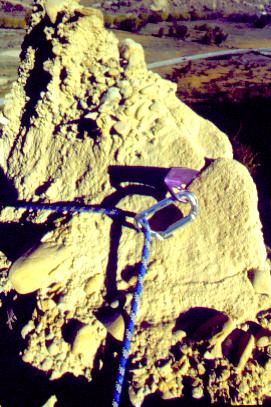 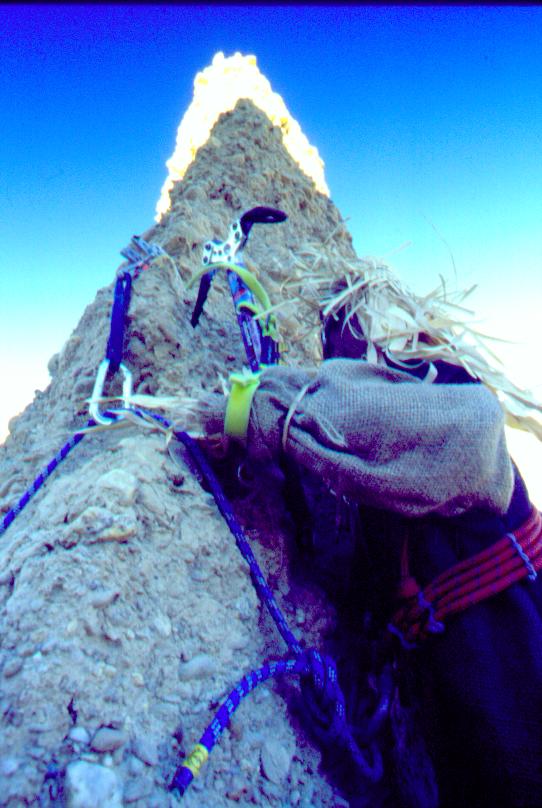
Cedric places a piton runner, then Cam runner & clings onto his
reversed curved Pulsar ice axe.
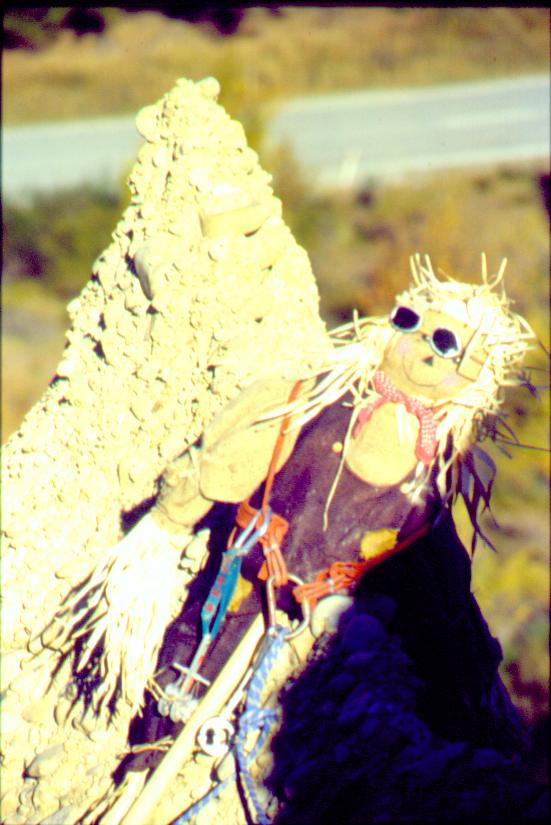 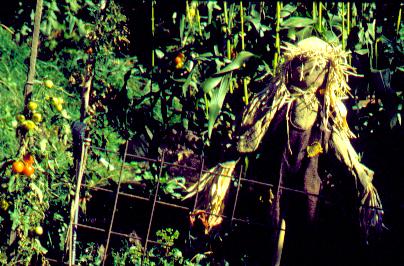
Perserverence pays off as Cedric tops out in the setting Sun - A summit at last.
Back in the garden day to day life gave Cedric opportunity to think of greater heights.
 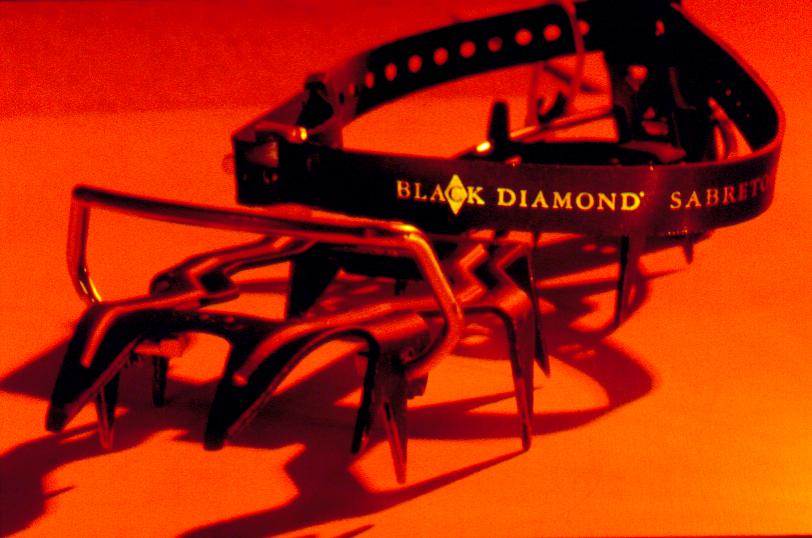
Cedric had a chat with his uncle Malcolm the famous Himalayan mountaineer
about climbing a snow peak as his ice axe didn't work well in the rock.
You'll need some crampons said Malcolm and some boots and icecrews.
Cedric bought some very sharp BD Sabretooth crampons from
Mountainrec, Wanaka
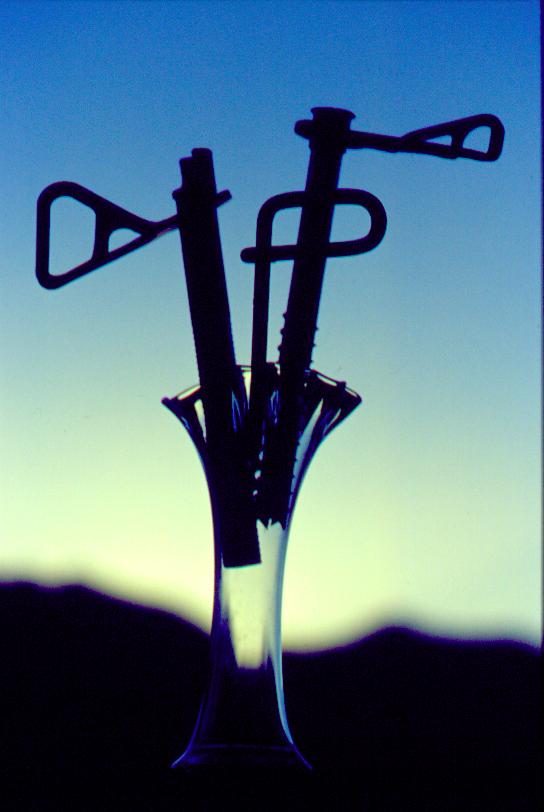 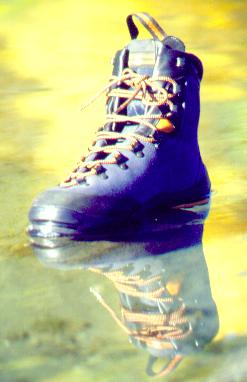
The ice screws looked so nice Cedric put them in a vase!
From the range, he picked a pair of Salomon Super Mtn 9 - Guides from Mountainrec..
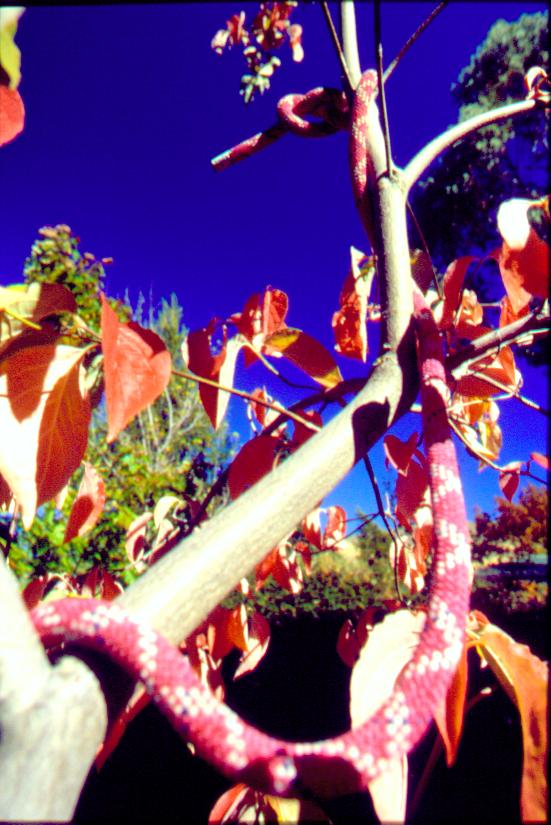 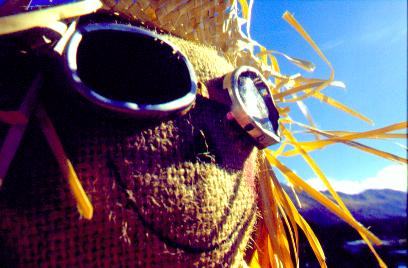
Cedric's rope enjoyed the rest and stretch.
What will happen to Cedric in his quest to become a mountaineer??
Heading up the Matukituki valley, Cedric comes to a vast lake, sets up
camp and goes to sleep for the night. In the morning....
he dreams of being on a vast ocean in his One Planet rockledge sleeping bag w/dryloft cover
The ocean is filled with mysterious sharp toothed creatures.
What will the future hold for Cedric and his new half Dome helmet. Is floating in the
lake all a bad dream?
Cedric did survive and returned to Wanaka damp, but not disallusioned.
Snow was now falling on the mountain tops. Winter was coming......
Cedric joined a Logn Park High School group on a snowcamping course.
According to Cedric igloos made of snow blocks looked stronger for
mountain winds than straw houses.
Cedric sets the night sky alight on the Mt. Cardrona expedition
with the lights of Queenstown behind.
A self portrait photo to send to Cedic's sponsors,
Salomon skis and boots; One Planet clothing and packs.
The adventure continues in Nth Queensland.....
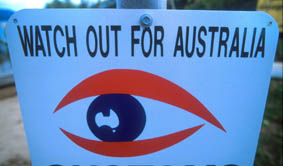
Yep, a lot of inhabitants bite, scratch, itch or suck but the abundance of
diverse land & seascape makes Nth. Q'land a travellers paradise.
By travelling with four friends I only got attacked 1/5th of the time!
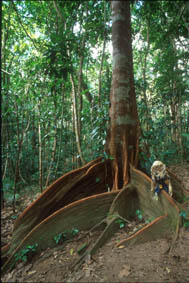
The tropical rainforests of Bartle Frere and Mossman were amazing!
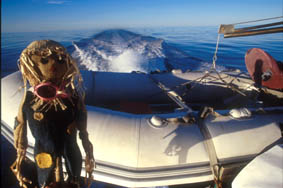
Self portrait on return journey from Lady Musgrave Island, 1770, a coral cay.
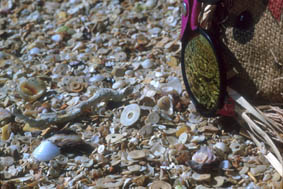
Beachcombing in WhitSunday Islands
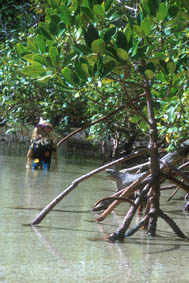
I got a bit swamped in the mangroves of Shaw Isl, Whitsunday Isl.

We saw amazing butterfly breeding creeks in the Whitsunday Isl.
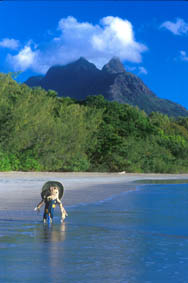
Zoe bay, Hinchenbrook Isl. Pretty impressive Aye? Note the Aussie style hat!
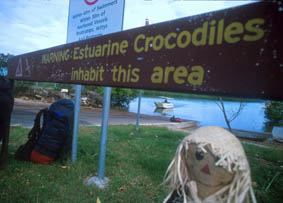
I declined the "swimming with the crocs" offer enroute to Hinchenbrook Isl..

The leeches on Barle Frere, Queensland's highest peak - Sucked!
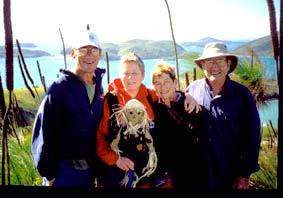
That's me (Cedric) in the middle of the Whitsunday Intrepid Middle-aged Party of Sailors
on the summit the spectacular Mt. Oldfield.
|

 Ruth & George Mallory
Ruth & George Mallory









